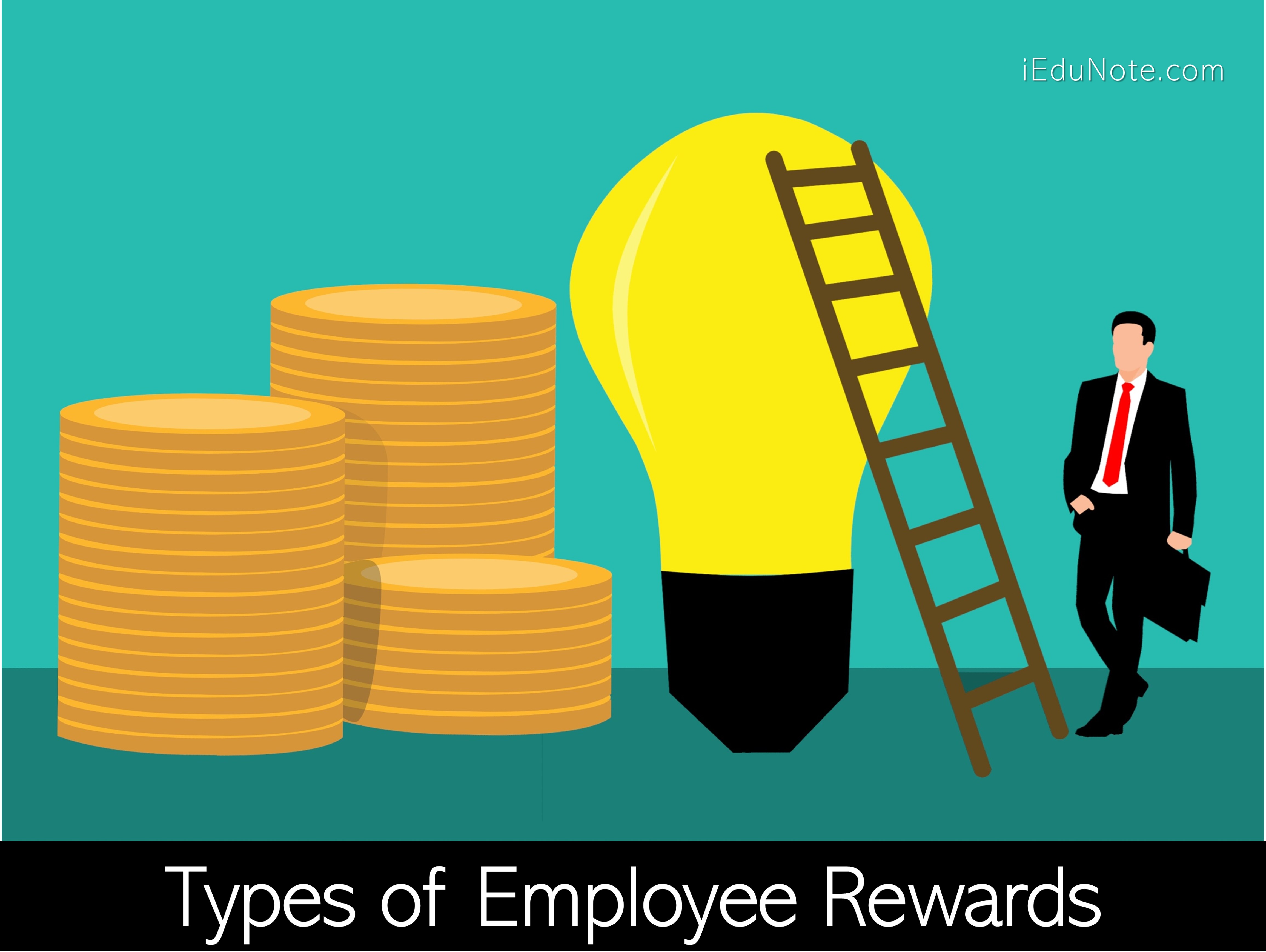There are several ways to classify rewards. We have selected 3 of the most typical dichotomies: intrinsic versus extrinsic rewards, financial versus nonfinancial rewards, and performance-based versus membership-based rewards.
As you will see, these categories are far from mutually exclusive, yet all share one common thread that assists in maintaining employee commitment.
Intrinsic versus Extrinsic Rewards

Intrinsic rewards are the personal satisfaction one gets from the job itself.
These are self-initiated rewards, such as having pride in one’s work, feeling accomplishment, or being part of a work team. Job enrichment can offer intrinsic rewards to employees by making work seem more meaningful.
On the other hand, extrinsic rewards are external to the job and come from an outside source, mainly management. For example, Apple Computer gives a PC to each of its employees.
After one year on the job, the PC becomes the employee’s personal property.
Consequently, if an employee experiences feelings of achievement or personal growth, we would label such rewards as intrinsic. If the employee receives a salary increase or a write-up in the company magazine, we will label these rewards as extrinsic.
| Intrinsic Rewards | Extrinsic Rewards |
|---|---|
| The employees being engaged in certain activities or tasks internally feel these. | The organization is directly providing these for performing certain jobs. |
| These are thoroughly intangible. | These are directly tangible. |
| These are usually under the control of the individuals receiving the same. | The firm directly controls these rewards. |
| These rewards include achievements, feelings of accomplishment, informal recognition, job satisfaction, personal growth, status, etc. | Formal recognition, fringe benefits, incentives, pay, promotion, etc., are examples of these rewards. |
Financial versus Non-financial Rewards
Rewards may or may not enhance the employee’s financial well-being. If they do, they can do this directly – through, for instance, wages, bonuses, profit-sharing, or indirectly through employer-subsidized benefits such as pension plans, paid vacations, paid sick leaves, and purchase discounts.
Nonfinancial rewards potentially cover a smorgasbord of desirable “extras” at the organization’s disposal. Their common link is that they do not increase the employee’s financial position.
Instead of enhancing the employee’s finances, nonfinancial rewards emphasize making life on the job more attractive.
The nonfinancial rewards that we will identify represent a few more obvious; however, the creation of these rewards is limited only by HRM’s ingenuity and ability to “use them to motivate” desirable behavior.
The saying, “One person’s food is another person’s poison,” applies to the entire subject of rewards, but specifically to the area of nonfinancial rewards.
Another might find what one employee views as “something I’ve always wanted “relatively useless.
Therefore, HRM must take great care in providing the property. The benefits by way of increased performance to the organization should be significant.
Some workers, for example, are very status conscious. A plush office, a carpeted floor, a large cherry desk, or signed artwork may be just the office furnishing that simulates an employee toward top performance.
Similarly, status-oriented employees may value an impressive job title, business cards, administrative assistant, or well-located parking space with their name pained underneath the “Reserved” sign.
In another case, the employee may value the opportunity to dress casually while at work or even do a portion of one’s job at home. Irrespective of the “incentive,” these are within the organization’s discretion.
And when carefully used, they may provide a stimulus for enhanced performance.
Performance-based versus Membership-based Rewards
The rewards that the organization allocates can be said to be based on either performance or membership criteria.
While HR representatives in many organizations will vigorously; argue that their reward system pays off for performance, you should recognize that this isn’t always the case.
Few organizations actually reward employees based on performance, a point we will discuss later in this chapter. Without question, the dominant basis for reward allocations in organizations is membership.
Performance-based rewards are exemplified by commissions, piecework pay plans, incentive systems, group bonuses, merit pay, or other pay-for-performance plans.
On the other hand, membership-based rewards include cost-of-living increases, benefits, and salary increases attributable to labor-market conditions, seniority or time in rank, credentials (such as a college degree or a graduate diploma), or future potential (e.g., the recent MBA out of a prestigious university).
The key point here is that membership-based rewards are generally extended regardless of an individual’s group’s or organization’s performance.
The difference between the two is not always obvious. In practice, performance may be only a minor determinant of rewards, despite academic theories that high motivation depends on performance-based rewards.